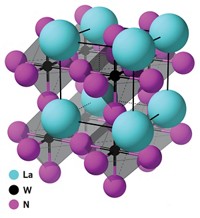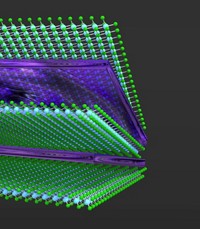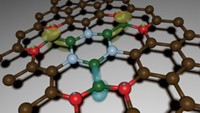Advertisement
Grab your lab coat. Let's get started
Welcome!
Welcome!
Create an account below to get 6 C&EN articles per month, receive newsletters and more - all free.
It seems this is your first time logging in online. Please enter the following information to continue.
As an ACS member you automatically get access to this site. All we need is few more details to create your reading experience.
Not you? Sign in with a different account.
Not you? Sign in with a different account.
ERROR 1
ERROR 1
ERROR 2
ERROR 2
ERROR 2
ERROR 2
ERROR 2
Password and Confirm password must match.
If you have an ACS member number, please enter it here so we can link this account to your membership. (optional)
ERROR 2
ACS values your privacy. By submitting your information, you are gaining access to C&EN and subscribing to our weekly newsletter. We use the information you provide to make your reading experience better, and we will never sell your data to third party members.
Inorganic Chemistry
III-V semiconductors sport clathrate structures
Method for making the electronics workhorse materials with cage-like structures may lead to new applications
by Mitch Jacoby
January 26, 2020
| A version of this story appeared in
Volume 98, Issue 4

Semiconductors composed of one group III and one group V element are widely used in light-emitting diodes, thermal imaging systems, and other commercial devices. These binary materials, which include gallium and indium antimonide, may soon find their way into even more electronic applications thanks to a study showing that the normally nonporous materials can be prepared as inherently tunable clathrates—crystals with cage-like cavities that trap molecules or ions (J. Am. Chem. Soc. 2020, DOI: 10.1021/jacs.9b12351). By using high-temperature methods to react stoichiometric quantities of group III and group V elements (or binary precursors) with either rubidium or cesium, Bryan Owens-Baird, Jian Wang, and Kirill Kovnir of Iowa State University and coworkers synthesized three unconventional III-V clathrates: Cs8In27Sb19, Cs8Ga27Sb19, and Rb8Ga27Sb19. Analyses show that the new compounds retain the high charge-carrier mobility and other critical semiconductor properties of the conventional versions. For example, the values of those parameters in Cs8In27Sb19 are on par with those of standard InSb, a top-performing semiconductor. Clathrates were discovered in the early 1800s by Humphry Davy. Two hundred years later, “it’s still interesting and exciting to expand clathrate chemistry to unconventional combinations of elements,” Kovnir says.





Join the conversation
Contact the reporter
Submit a Letter to the Editor for publication
Engage with us on Twitter